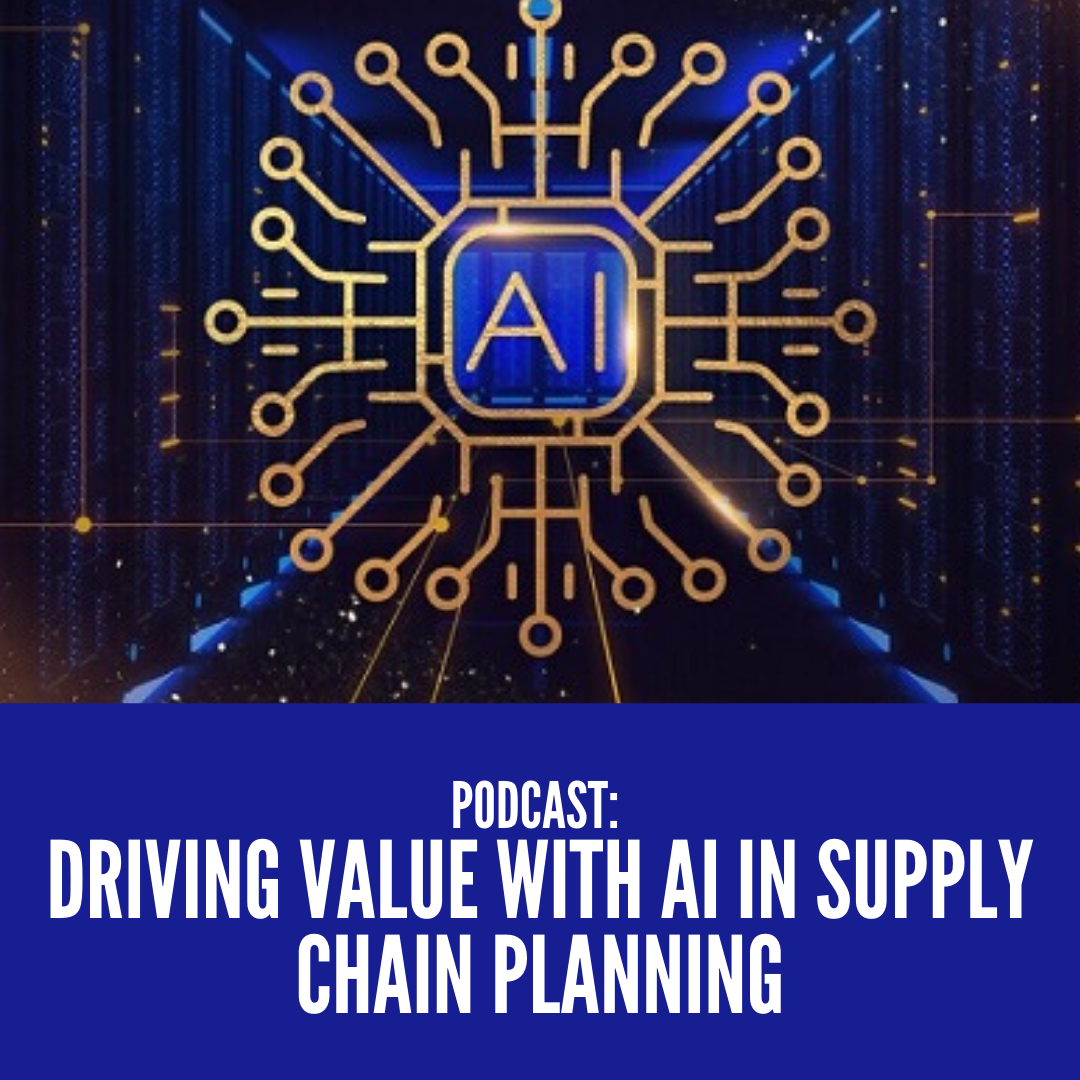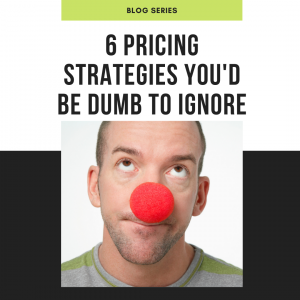Bad Pricing Strategies: What’s That Smell?
 Retailers have already been feeling the squeeze to fine-tune their pricing strategies for quite some time now; thanks to COVID-19 and Amazon, distributors are now being dragged right into the thick of it.
Retailers have already been feeling the squeeze to fine-tune their pricing strategies for quite some time now; thanks to COVID-19 and Amazon, distributors are now being dragged right into the thick of it.
Distributors are stuck in the middle of the supply chain, with ecommerce having exploded into their turf. Many are having to re-examine their delivery models and pricing strategies in order to defend against rising competition, price transparency, costs and other threats.
So today we’d like to share a little Q&A with Cliff Isaacson, Blue Ridge’s EVP, Product Strategy, to help you determine the right pricing strategies for your increasingly complex supply chain.
Oh, Times They are a Changin'
Never before has pricing been a more elusive — yet crucial — component of a distributor’s business. You can throw Amazon under the bus all you want (and you have great reason to); but the cold, hard truth is that today:
- Pricing is more elastic & harder to determine because of ecommerce (check out these ecommerce growth stats during COVID-19, if you don’t believe me)
- The complexities around pricing are accelerating every day
- Pricing is an increasingly impactful force on your business (whether a competitive threat or strength)
There’s no magic sign to illuminate the perfect market price for every item, every location, every channel, every day. But distribution businesses are finding success with new AI-based price optimization solutions to react quickly to change and achieve their financial goals.
Profit Impact of Bad Pricing
There's a bad smell in the air when it comes to pricing strategy for most distributors. They know they need to improve profits, but they don’t know which items, at which locations or on what channels, can get them there. Many have under-priced or over-priced items eroding their profits without their knowledge.
In a recent podcast, we talked with Cliff about some pricing strategies and AI-based pricing technologies that eliminate these bad pricing habits. He offers strategies to help you quickly identify profit opportunities and test list pricing strategies to achieve your financial goals.
So Cliff, what’s the big whoop here?
Cliff: Well, many retailers and distributors are really under-utilizing the advanced science and proven best practices available to maximize margin, profits, revenue and sales. It’s amazing to me how very little planners know about which of their products are under-priced or over-priced right now. There’s a bad smell in the air, but they have no insight into which channels or which locations are causing the problem.
Get this… A 1% change in price can have over 7% change in gross profits, significantly more than a 1% change in unit sales or decrease in COGS can do.
What’s causing this?
Cliff: There are so many challenges going on in wholesale and distribution right now – both domestically and internationally – which are forcing them to move faster and smarter. (The Amazon Effect, tariffs, transportation costs, etc. Oh yeah, and that virus thing!). The only way to react with agility is to put a solid pricing platform into place.
“It doesn’t have to be some big, complex enterprise system. New purpose-built, AI-based price optimization solutions are extremely sophisticated, yet very simple to roll out. And they work.”
Benefits of AI in Pricing Solutions
What are the benefits of AI-based pricing solutions?
Cliff: These pricing platforms help you quickly identify under-priced items, position list prices against competitors, test list pricing strategies, and compare forecasted outcomes to achieve margin, profit, revenue, market share and other financial goals.
Better list pricing can be used to do things like improve negotiated net prices, leverage supplier negotiations, comply with vendor minimums like NPIP and MAP, and improve price image.
Who actually needs price optimization software? Is there a particular sized company or role that would gain the biggest advantage here?
Cliff: Yes. In terms of companies,
Large retailers and distributors of discrete products that publish list prices on an annual or more frequent basis,
- Who are struggling to achieve financial goals from price changes
- And experience frequent price changes in response to cost changes, competitive pricing, or other macro-economic factors
- With a SKU count less than 1,000,000
In terms of roles, it could be a:
- CFO looking to free up cash/improve profits or raise margins; would like to use pricing to deplete inventory; or is unhappy with financial forecasts of pricing changes.
- VP of Sales or Merchandising: interested in improving profitability; concerned with customer price complaints; would like more information on pricing strategy entering negotiations with suppliers.
- Pricing Analyst: struggling with how to identify mis-priced products, achieve requested margin or revenue improvement goals; relying on manual cost-plus approach to pricing; can’t forecast results of price changes or test different pricing strategies.
Seems like some of these folks (especially a CFO) might hear the word “platform” and shy away from the investment. What would you say to the champion in this situation, if they are still not sure?
Cliff: Well, a surefire way to know there’s a need is to ask a few key questions:
- Do you know which of your products are under-priced or over-priced?
- Which ones can have the biggest impact on achieving better margins or profits?
- Are you confident you can forecast the financial impact of price changes?
- Can you compare the results of different pricing strategies?
- Do you consider inventory levels when setting prices?
If you’re not 100% confident in any one of these – and most retail/distribution organizations are NOT – it’s a good sign that you’re leaving money on the table and it’s time.
What to Look for in a Price Optimization Solution
Alright… Better pricing, predictable results, and improved profits. Sounds pretty good to me! So, where does someone start? There are so many different price optimization tools out there; what should they look for?
Cliff: It’s got to be purpose-built, easy to implement, and it must provide assurance, long-term.
Cloud-native solutions for demand forecasting that are purpose-built for retail and distribution use AI and transaction-level data to serve up better pricing and achieve financial goals. It should also be easy to get into; with some solutions, you can be up and running in as little as 30 days and see real ROI in weeks or months. Not years. The cloud-native component puts far less stress on your IT resources, too.
Also, the vendor should have a horse in your race… Do they offer personalized attention from expert practitioners working to make sure you get more sustainable, long-term results? Or are they just handing over the keys to a Ferrari and saying, “Good luck”?
Finally, do they charge extra for ongoing monitoring and support? Beware of hidden consulting prices!
 Walk me through the capabilities as they translate to a distributor’s end game.
Walk me through the capabilities as they translate to a distributor’s end game.
Cliff:
- Identify lower-risk profit opportunities: identify under-priced items, review profit opportunities, and understand recommendation confidence.
- Continuous pricing improvement: run list pricing What-If simulations, review results, choose best strategy and tactics based on results, and lock in the best strategies to operationalize.
- Price all items in your assortment using unique AI-based science for pricing: calculate models using unique pricing methods that consider both fast-selling key items and infrequently sold long-tail assortment items across channels and locations, scientific methods to choose the best approach, infer models using an attribute matrix where needed, calculate elasticity by segment. Flexible design supports monthly, weekly, or daily pricing.
- Create and test lifecycle pricing scenarios using a comprehensive strategy engine: re-sequence rules, leverage price optimization, competitive positioning, business constraints, product and price type relationships, ending number rules, and other AI logic and group in strategies for evaluation and selection. Displays detailed results for each step to understand the impact of each constraint.
- Price optimization
- Tiered relationships like good-better-best
- Price type relationships like list vs. wholesale vs. refurbished vs. remanufactured
- Optimize prices using different costs like retail, wholesale and custom costs
- Group, family, class and other price groupings
- Cross-channel price alignment
- Minimum and maximum thresholds
- Customer segment pricing
- Ending number rules
- Self-service analytics: upload your own data, run your own optimization and other processes, review results and drill into details to understand results and incorporate into new simulations.
- Low risk, try-before-you-buy: purchase a short-term subscription, choose the plan you want, and try out the solution on your terms rather than through a large, risky capital “big bang” project involving complex data acquisition and data cleansing.
- Rapid and Sustainable results, time to (live) production in as little as 90 days. Configures to your unique environment, rather than customized.
Why Cloud Matters in Price Optimization
Ok so I’ve got my price optimization solution. A consultant is holding my hand to proactively monitor analytics, performance, opportunities and risks to assure consistent and sustainable results. I can manage everything in one central solution – price change impact, scenario comparison, competitor analysis, and analytics. I can even collaborate with my suppliers. What about the cloud-native component; why does that matter?
Cliff: Cloud-based price optimization solutions offer 3 key benefits:
- Get frequent innovations and upgrades due to the cloud model
- Harness the inherent processing power of cloud computing
- Conform to the most complex deployments
I just want to play devil’s advocate for a minute here… What if a company feels they are already profitable with their current pricing; can this really have a big impact?
Cliff: Absolutely. It boils down to visibility – and many organizations don’t even realize they have a pricing problem until they dig into the system.
"A 1% change in price can have over a 7% change in gross profits."
So YEAH, pricing strategy matters. What kind of damage can a 1% change in unit sales or decrease in COGS do?
Poor pricing has a direct impact on profits, margins, revenues, market share, price image and customer satisfaction. Thanks to COVID-19 and The Amazon Effect, customer price sensitivity and the criticality of getting pricing strategy right is only skyrocketing.
We’ve seen hundreds of companies implementing pricing solutions achieve dramatic results, very quickly.
Can ERP Systems Handle Pricing?
Sounds like a good example of “You don’t know what you don’t know.” But can’t inventory leaders just use their ERP systems to handle pricing?
Cliff: A generic ERP will never get you the price optimization you need. It wasn’t designed for it.
A purpose-built solution for mid-size retailers and distributors that is easy to use, self-service, and can provide price optimization, price recommendations, pricing scenario is no match for a generic ERP. You need What-If, and Best Practice pricing analysis into one, cloud-based system so you can optimize, test, forecast and set prices quickly – which a generic ERP can’t do.
Let’s talk vendor selection. Is it just the big-name players doing this?
Cliff: No. In fact, I’ve seen much better results with a focused cloud-native, self-service solution.
Only these guys can deliver the agility you need to identify profit opportunities – and find them faster than anyone else.
“Because cloud-native, self-service pricing solutions are purpose-built for retail and distribution, you no longer have to force your pricing into a platform that wasn’t designed to hold it.”
Only select AI-based pricing and supply chain planning solutions have the calculating power to handle large amounts of data and allow you to analyze your own data and identify pricing opportunities within hours – not days or weeks. That, coupled with personalized and proactive support, is something you won’t get with the big vendors. You won’t ever be pushed to the bottom of the priority list because a bigger client is waiting on another line.
If You Enjoyed this Interview
... and you want to learn more about price optimization, send us a note. We’d be happy to chat about your specific needs! You can also check out our latest series on Pricing Strategy:




Comments are closed.